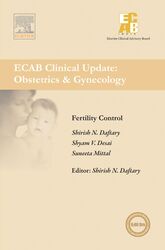「重要なお知らせ:日本語書籍をご購入いただき、eLibraryをご利用の皆さまへ」
エルゼビアは、より快適にサービスをご利用いただくため、システムの重要なアップデートを実施いたします。
現在、新サイト、eBooks+への移行が進められています。
新規ユーザー登録および書籍の登録はElsevier eLibraryでは停止しております。
12月15日以降に
こちらよりご利用・ご登録ください。
Book Description
With the objective of limiting the individual family size to just one or two children, most women spend the larger part of their reproductive years attempting to avoid an unwanted or unplanned pregnancy. Effective fertility control is important in a woman’s life to give her the choices of planning her family and to empower her to accomplish her goals in life besides, those of mere childbearing and childrearing. As with many other preventative medical interventions, the efficacy of contraceptive measures cannot be directly assessed; only failures can be quantified. The Pearl index is a statistical tool in this context, for measuring the effectiveness of the fertility control method and estimation of the number of unintended pregnancies per 100 woman-years of exposure. It is also used to compare the birth control methods with a lower Pearl index denoting a lower chance of getting unintentionally pregnant. Fertility Control has come up with comparative study of different controlling techniques, along with the clinical experiences of its eminent authors.


 (0 rating)
(0 rating) 




